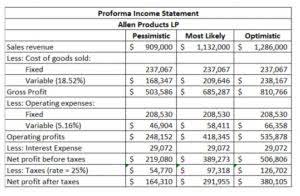
Below is a list of the most common areas that must be covered in your church budget. Following a budget also helps hold churches accountable to their congregations and allows them to follow their mission of reaching more people and spreading God’s word. If this is your first time creating an annual budget for your church, you may not know exactly which expenses are the highest priority. Your first year will likely be a year of discovering how to prioritize them. However, it’s still worth the time to consider what expenses should be top priority and which can be set aside in times of financial strain. Now that you’ve identified all of your sources of income and expenses, it’s time to put that knowledge to how to create a church budget use.
What Are Common Mistakes to Avoid in Church Budgeting?
This is why it’s essential to find out exactly how much and where your church generates revenue. This can help you outline it in the budget and highlight issues you may have throughout the year. If your church struggles to bring Bookkeeping for Veterinarians in enough income, this is important to keep in mind when drafting your budget. Your budget should take this into consideration by limiting or controlling expenses. This way, you can ensure that you have enough money for the essential aspects of keeping the church running. Budgeting is essential to make sure that you have enough income to cover your expenses.
Facilities and Maintenance
The only time to worry is if there is not enough money to pay your regular bills. Abudget allows you to plan better, to look out for possible problems ahead of time, and not get caught off guard. This is a good time to introduce benevolence or other projects into the equation. Eventhough the income or expenses may not have been present before, adjust them into the income area as well as the expense area.
Prioritize Emergency Funds & Savings.

Line-item budgeting is the most common form of business budget. If your church already has a budget that works, this type of may work best. A line-item budget assets = liabilities + equity takes a church’s previous budget and only makes a few tweaks to update it for the current year. Regardless of the type of budget you decide to go with, if your budget answers each of these questions and looks toward the future, you are on the right track. It’s important to create a review process to keep the budget functional.

- I like to see them involved in the annual giving campaign and looking at ways of boosting the church’s giving.
- These include donations from the congregation, fundraising events, and other sources.
- Review past financial records and consult with ministry leaders and staff to determine accurate expense estimates.
- Creating your church budget is critical for planning church activities, managing church expenses, and maintaining assets like a church building.
Implementing the church budget is a crucial step in translating financial plans into action. It involves effective communication with the congregation and establishing mechanisms for regular review and adjustment. Here’s a guide on how to implement your church budget, including subsections on communication with the congregation and regular review and adjustment.
If you present your budget for approval, include all Tier 1 and Tier 2 numbers to form the actual budget. Not every department needs to include Tier 3 dreams, but both variable and fixed expenses should be included in Tiers 1 and 2. My recommendation is to have a tangible difference between each tier. A $20 white board probably does not need to be included as a dream, but a new sound system may be something you are praying and planning for in the upcoming year. Your ministry may be unique, but the business practices do not need to be complicated.
When donor gifts are less frequent than previous years, you may be forced to cut back to mission critical expenses (Tier 1). This means that instead of using the previous year’s budget as a starting point, every expense must be evaluated and justified based on its importance and necessity. Before we get into the nitty-gritty of what should actually go into a church budget, let’s make sure we have a strong foundation. The stronger your foundation, the more effective your budget will be. Therefore, as you manage and maintain your budget month over month, key a journal of everything that changes along the way. This is what you plan to do based on everything you know at the time.
- Once you learn how to create and maintain a budget that works for your church, you’ll discover that it’s an indespensible part of your ministry.
- This guide will walk you through the essential guidelines involved in creating a budget that reflects your church values and makes your church viable for many more years to come.
- It’s also a good reflection of a church’s integrity and commitment to Biblical stewardship.
- Without a budget, there is no means to accomplish the work you’ve been called to.
- When a church puts on an event or conference, there’s sometimes a registration fee the attendee pays for the event.
- This will help you see where your money is going and what your biggest expenses are.
- This can provide consistency and ensure that all areas receive some funding, but it may not always align with the church’s current goals or needs.
- This could mean funding more programs, making other upgrades or even expanding the project itself.
- Here’s a quick look at the different income sources to include in a church budget.
- Variable expenses will change each year, or even month, based on fluctuating needs.
- These reports offer valuable insights into spending trends, helping leaders make informed financial decisions.
Regular contributions allow churches to plan for predictable income. A budget that is based on insufficient information will probably need to be adjusted regularly, so keep that in mind as well. Even if 100% of your members have signed up for monthly giving, your church’s income is naturally going to fluctuate throughout the year as visitors come and go. Depending on the church’s leadership structure model, other individuals or teams might also be involved in this review process.

This category includes mortgage or rent for church facilities, utility expenses, janitorial services, general maintenance, and capital reserve savings. It is crucial to manage these expenses efficiently to ensure the church’s financial stability. Direct ministry program expenses are funds allocated to support the various ministries and outreach programs of the church. This category ensures that these programs can continue to serve the community effectively. Maintaining the church’s facilities and equipment is critical to the church budget. This category includes facility repairs, equipment upgrades, and general maintenance expenses.

